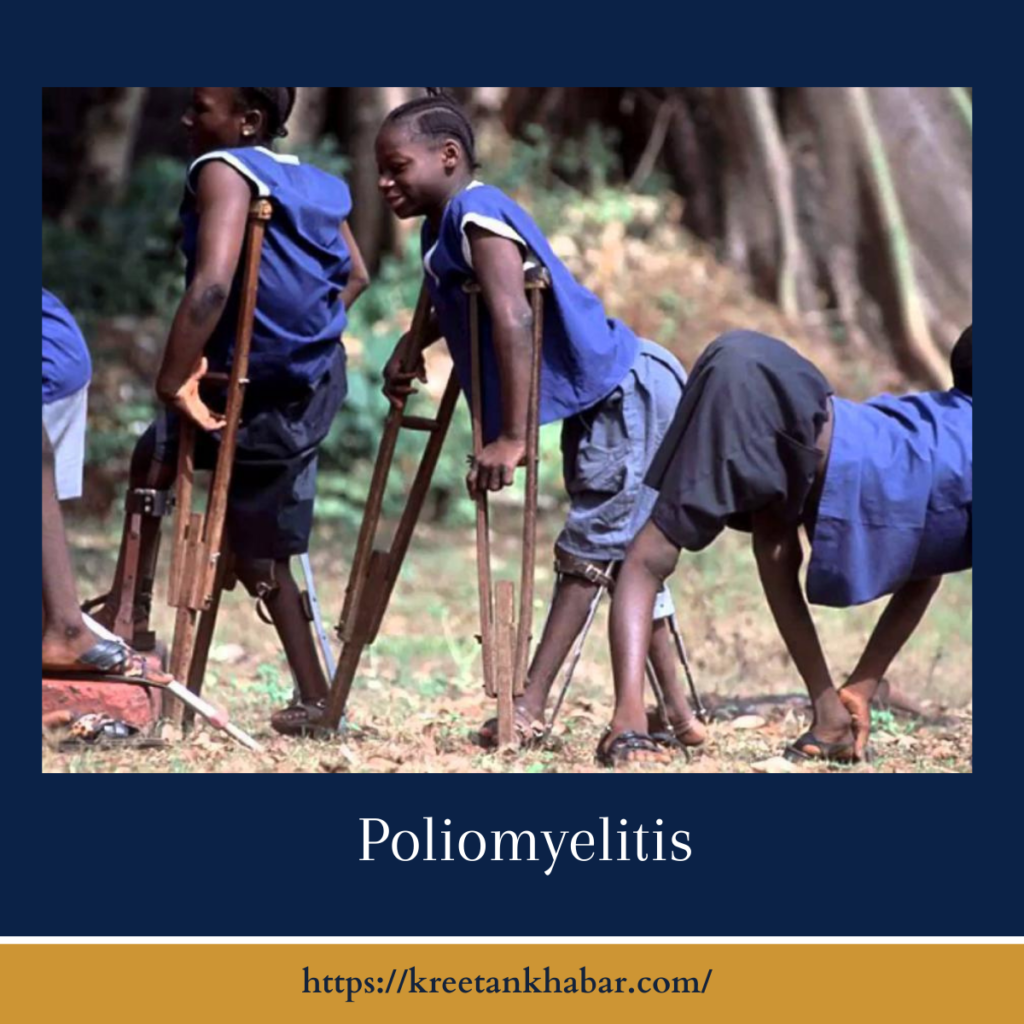Poliomyelitis: A Human Perspective
In the realm of infectious diseases, Poliomyelitis, or polio, emerges as a name that carries a weight of historical significance. Beyond being a medical term, Poliomyelitis tells a story of resilience, scientific breakthroughs, and ongoing global efforts to eradicate a once-dreaded disease. Let’s dive into the human side of poliomyelitis – its impact, the journey towards eradication, and the faces behind the statistics.

The Polio Journey:
Poliomyelitis is caused by the poliovirus, a highly contagious virus that primarily spreads through the fecal-oral route. While the virus often manifests as a mild illness, in some cases, it can invade the nervous system, leading to paralysis. For those who lived through the pre-vaccine era, the fear of Poliomyelitis was palpable, as outbreaks could leave communities in the grip of panic.
The Faces of Polio:
- Childhood Shadows: Polio often struck in childhood, turning playgrounds into battlegrounds. Parents lived with the constant fear that their child’s seemingly innocuous fever could be the precursor to a life-altering paralysis.
- Iron Lungs and Wheelchairs: The images of iron lungs and children in wheelchairs became synonymous with the fight against Poliomyelitis. Each wheelchair told a tale of resilience, but it also symbolized the challenges faced by survivors.
- Heroes in White Coats: The development of Poliomyelitis vaccines, particularly the oral polio vaccine (OPV) by Dr. Albert Sabin and the inactivated polio vaccine (IPV) by Dr. Jonas Salk, marked a turning point. These scientists became unsung heroes, and their vaccines paved the way for global immunization efforts.
The Global Fight:
The global fight against Poliomyelitis is like a grand expedition, with health warriors spanning continents to vanquish a once-dreaded foe. Picture this: health workers armed not with swords, but with oral polio vaccines, trekking through bustling cities and remote villages alike, determined to shield every child from the threat of paralysis. It’s a collective effort, a symphony of diverse voices and faces, embodying the shared commitment to wipe out Poliomyelitis.
Challenges arise, from navigating challenging terrains to addressing vaccine hesitancy, yet the pulse of this fight beats strong. The mission is clear – ensure no child is left unvaccinated, no community left unprotected. Polio’s global journey is a testament to human resilience, unity, and the unwavering belief that together, we can consign this ancient adversary to the pages of history.
- The Pulse of Eradication: With vaccination campaigns spanning the globe, the fight against Poliomyelitis became a collective effort. The image of health workers administering drops of the oral vaccine became a beacon of hope in the battle against this formidable adversary.
- Challenges on the Ground: Eradicating polio faced hurdles – from reaching remote areas to overcoming vaccine hesitancy. The human touch of community health workers, braving challenging terrains, played a pivotal role in ensuring no child was left unvaccinated.
The Current Landscape:
In the current landscape, Poliomyelitis is like an old warrior gradually retreating from the battlefield. The number of Poliomyelitis cases has dramatically plummeted, and there are regions that have declared victory against the virus. It’s a hopeful horizon, but the finish line is not quite in sight. Ongoing efforts are crucial to extinguish the last embers of poliovirus transmission and ensure that no community is left vulnerable.
The struggle doesn’t end with statistics; it’s about the individuals and families still at risk. Post-polio syndrome adds another layer to the story, reminding us that even survivors continue to face challenges. The current landscape is a mix of progress and persistence, urging us to stay vigilant and sustain the momentum until the day we can declare the globe entirely polio-free.
- Progress and Persistence: Significant progress has been made. The number of polio cases has plummeted dramatically, and several regions have been declared polio-free. However, the finish line remains elusive, and ongoing efforts are essential to extinguish the last embers of poliovirus transmission.
- Post-Polio Syndrome: For those who experienced polio in the past, the journey doesn’t end with recovery. Many face the challenges of post-polio syndrome, a condition where previously affected muscles weaken over time, highlighting the importance of ongoing support and healthcare.
A Call to Action:
Poliomyelitis, once a specter haunting households, now stands at the brink of extinction. The human stories within this narrative serve as a testament to the power of scientific innovation, global collaboration, and the resilience of communities. As we navigate the final steps towards eradication, let us remain vigilant, remembering the faces and stories behind the statistics, ensuring that no one is left behind in the quest to consign polio to the pages of history.
Read also : Exploring the Delightful Boost of the Green Tea Shot 2023